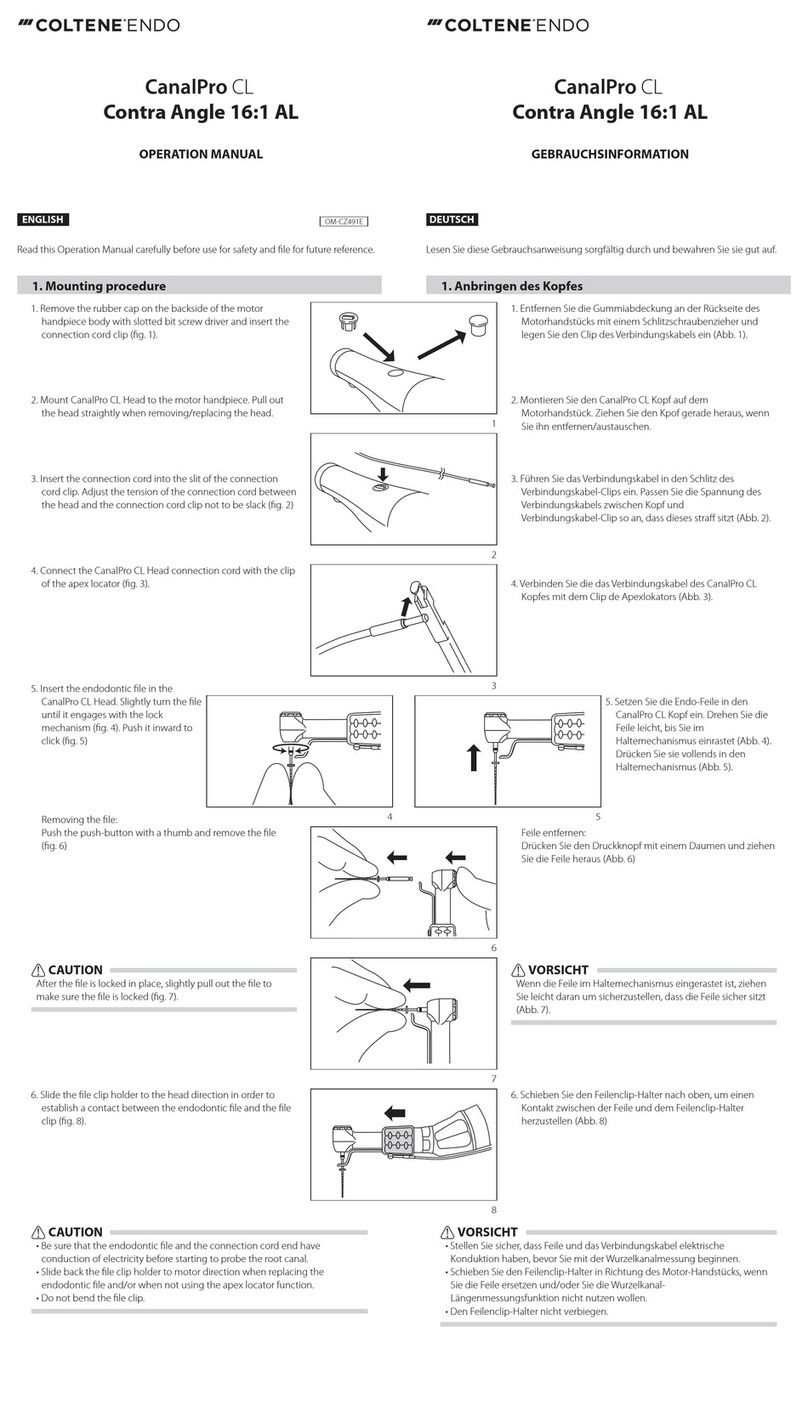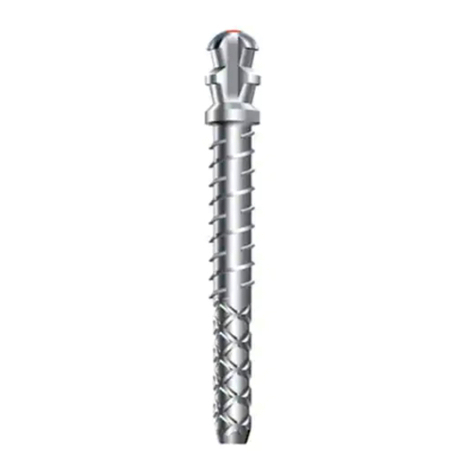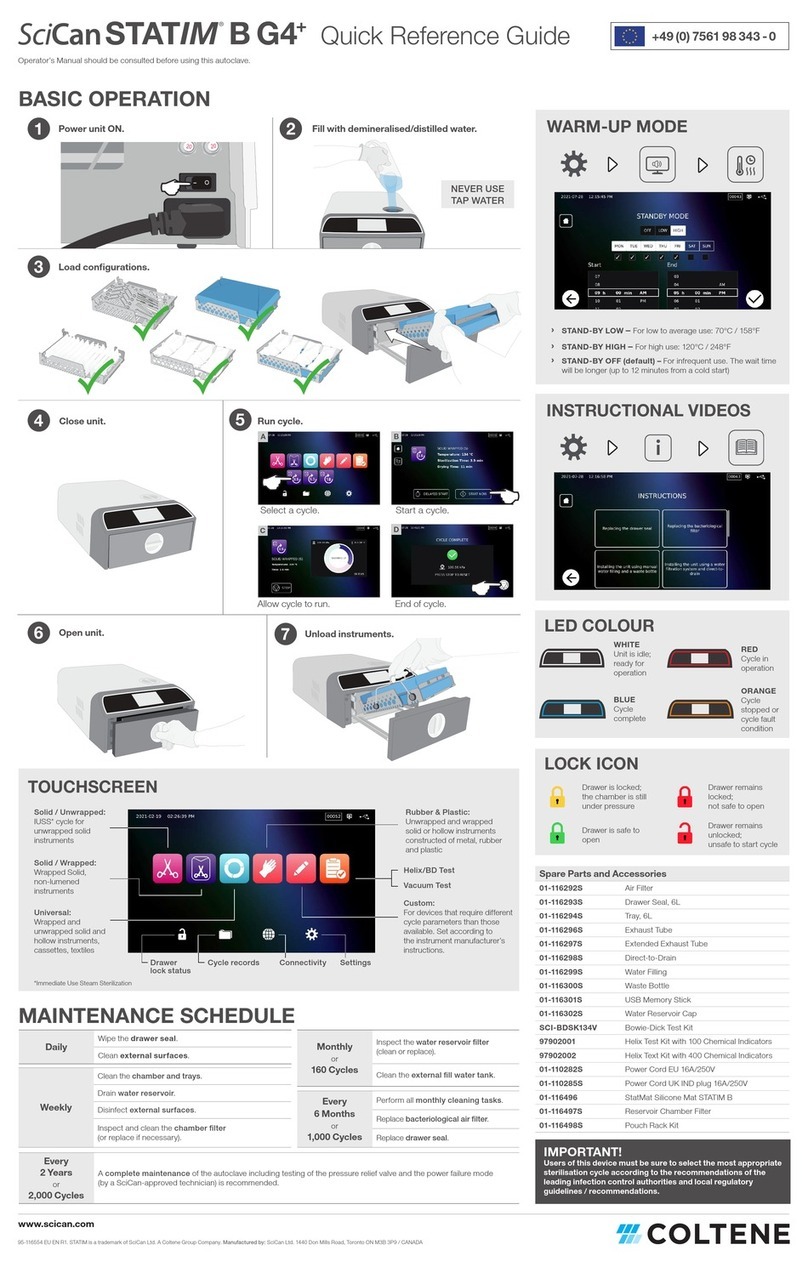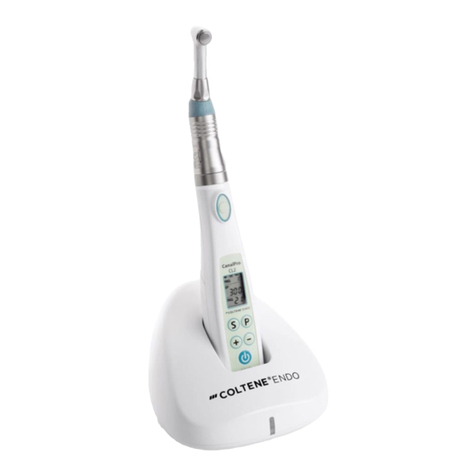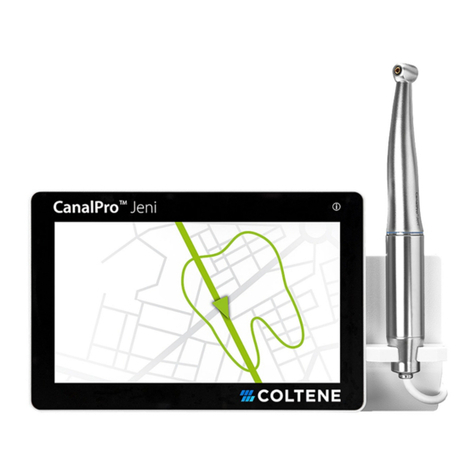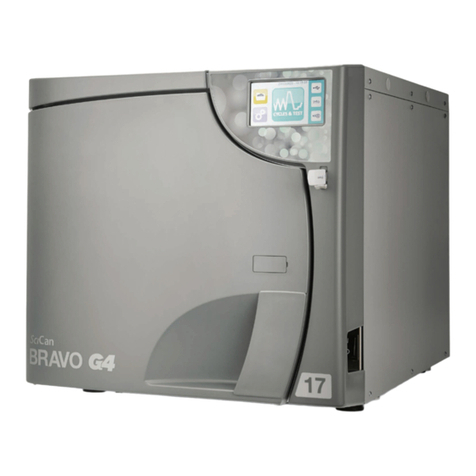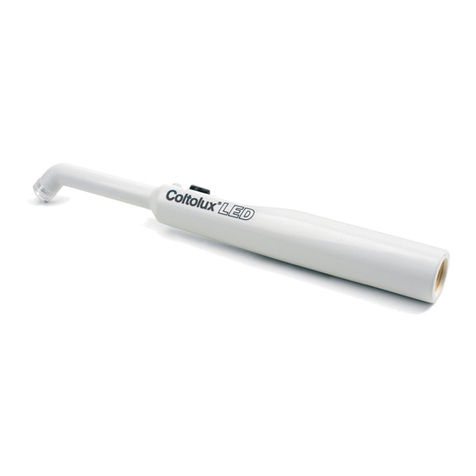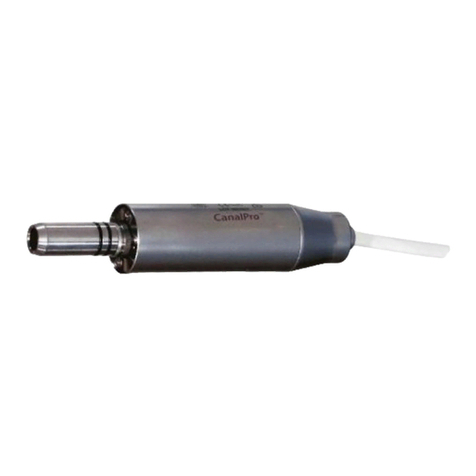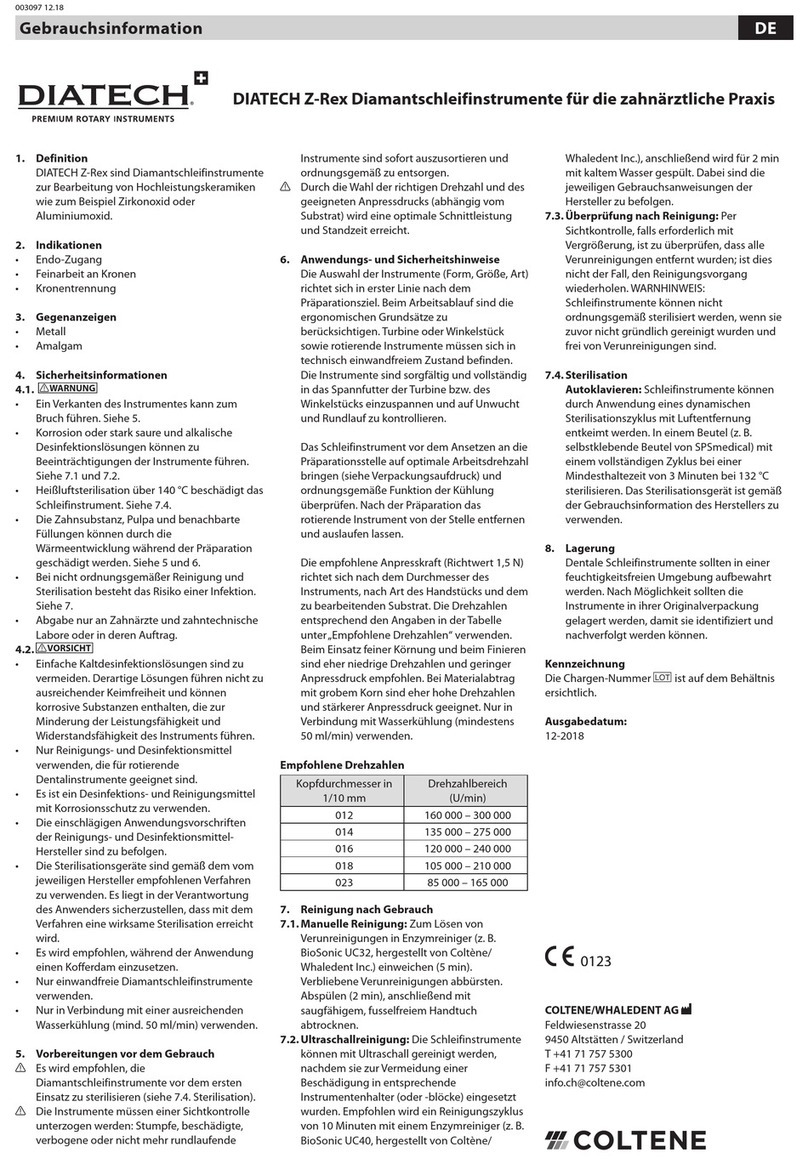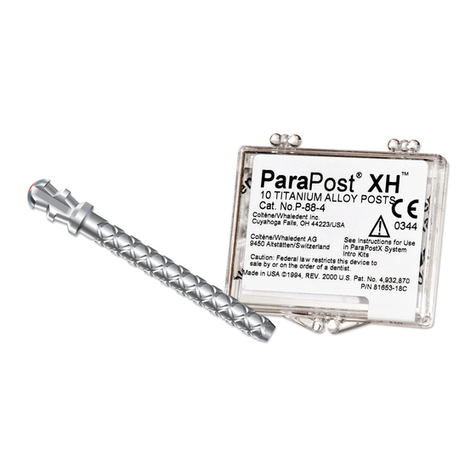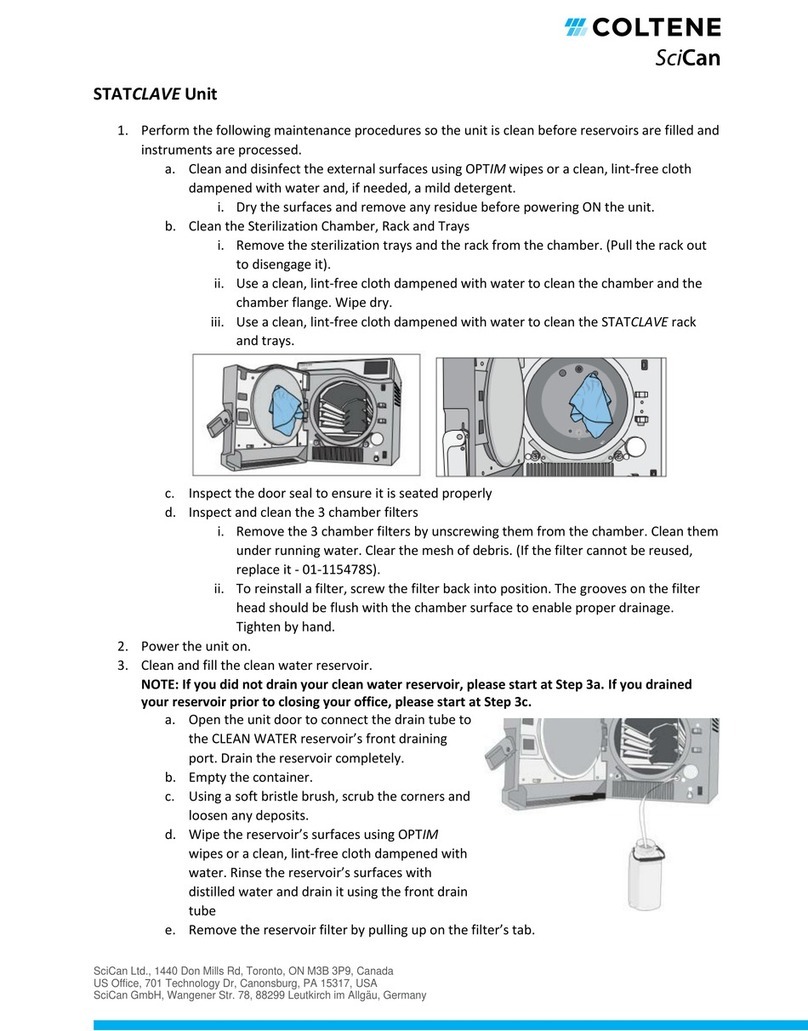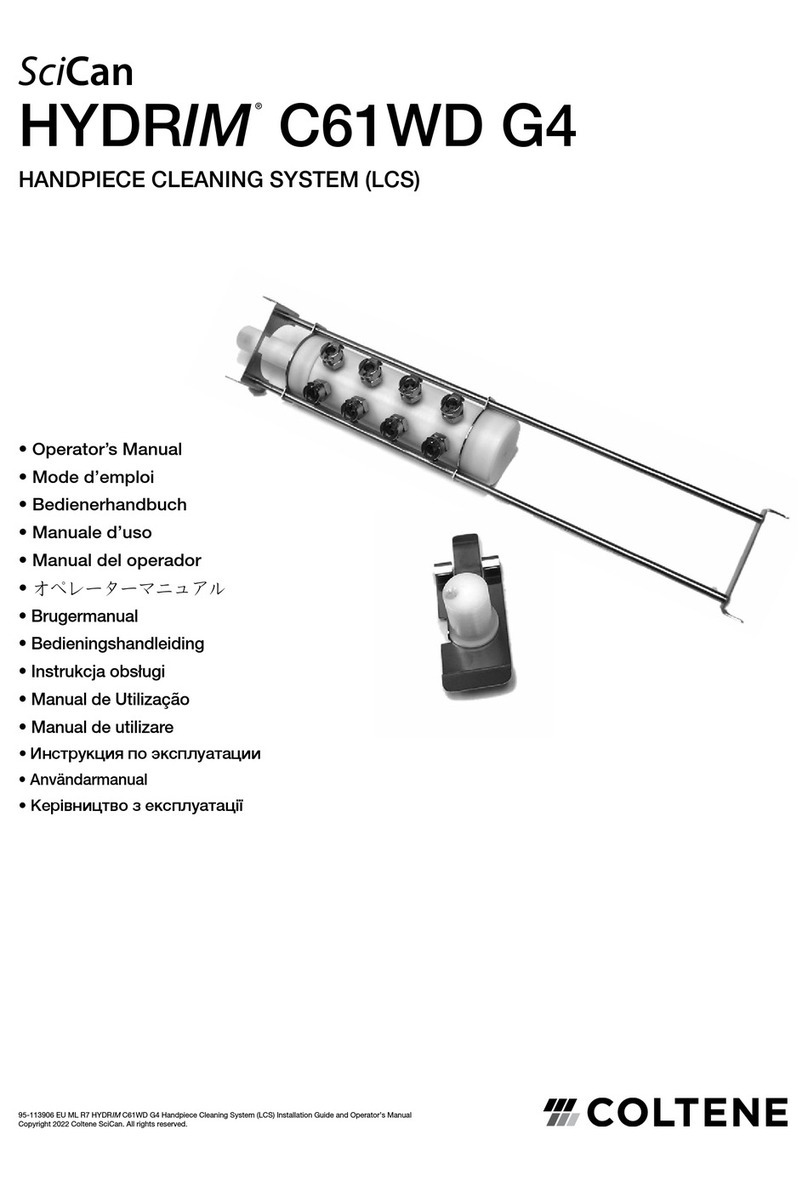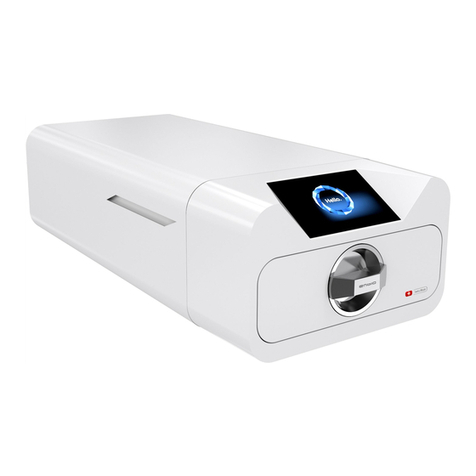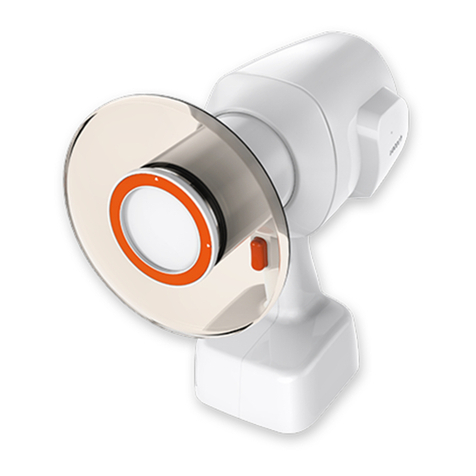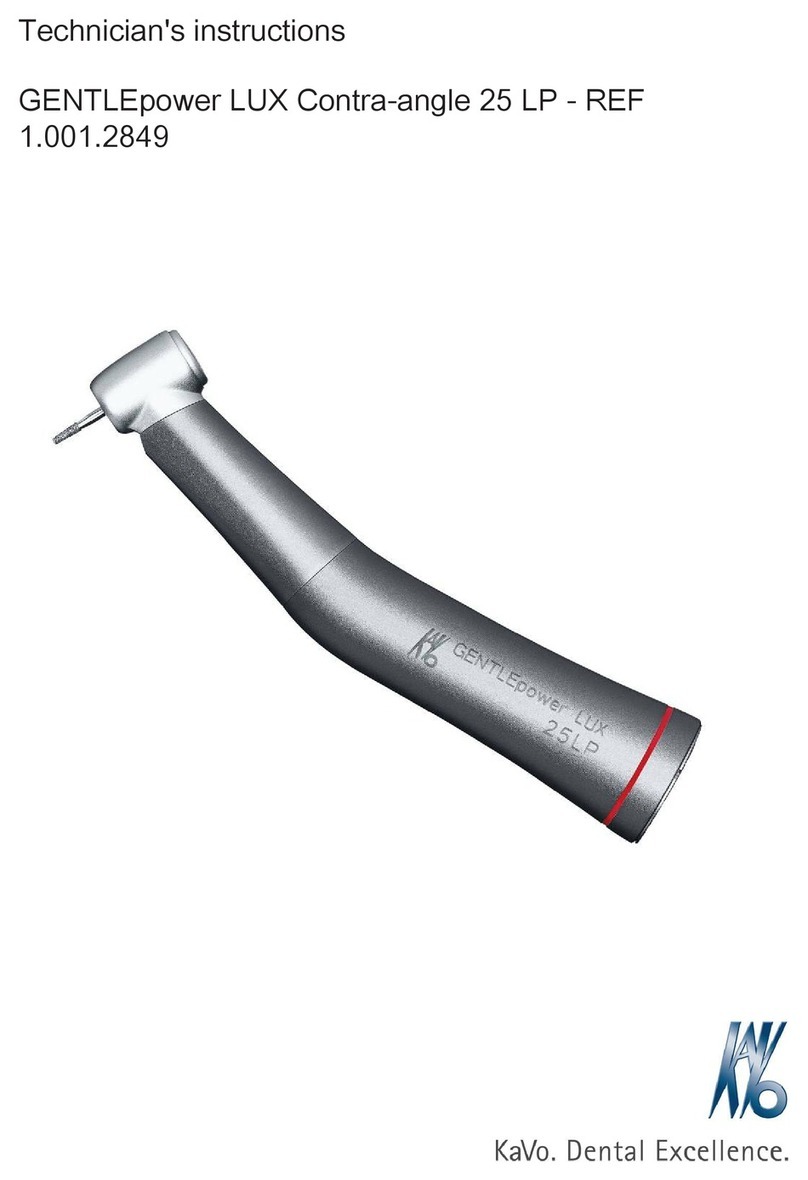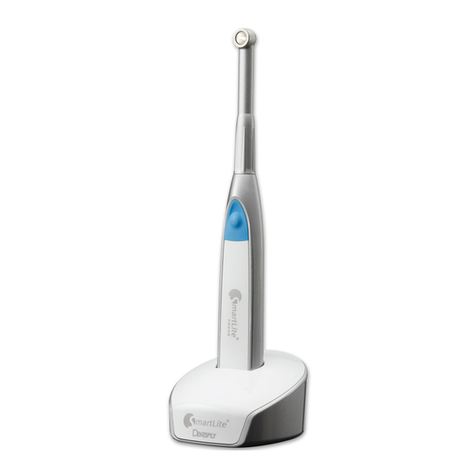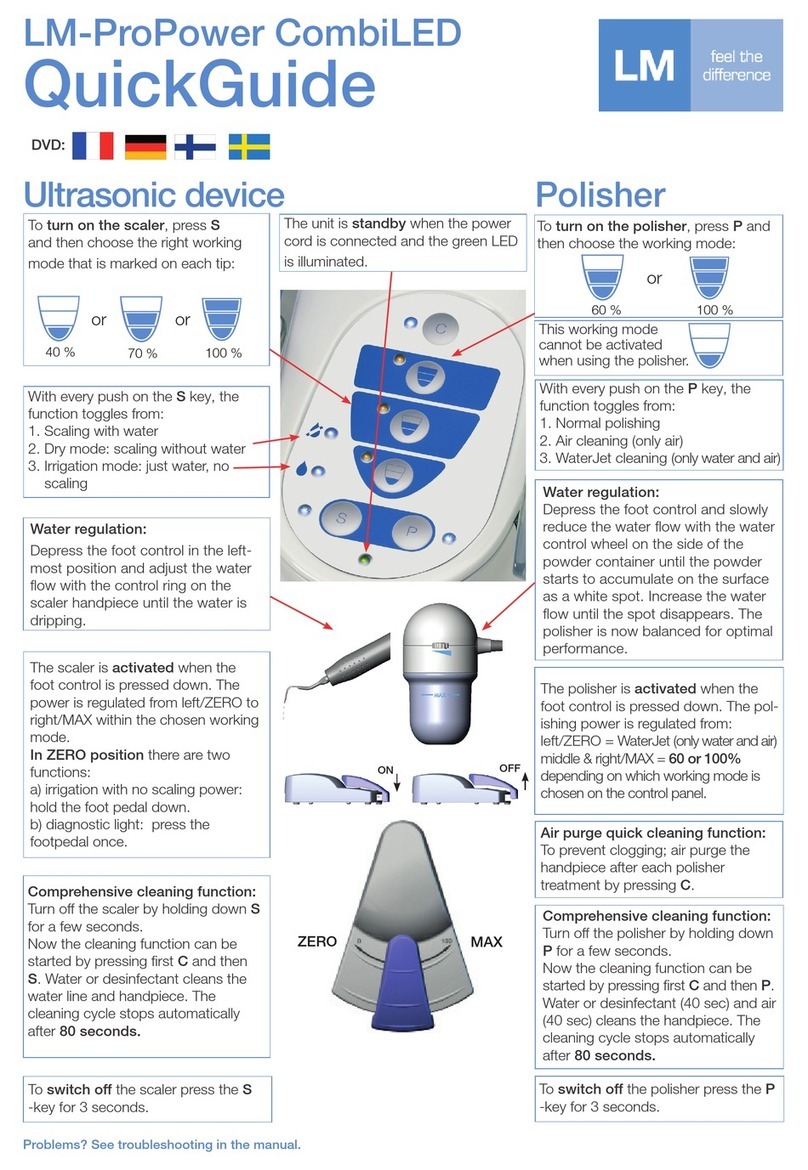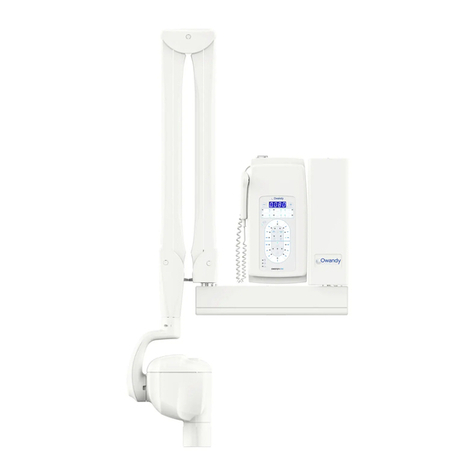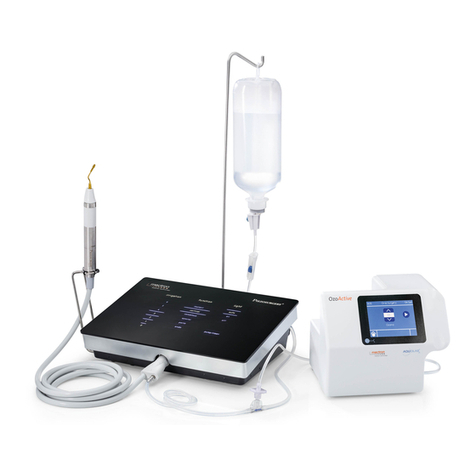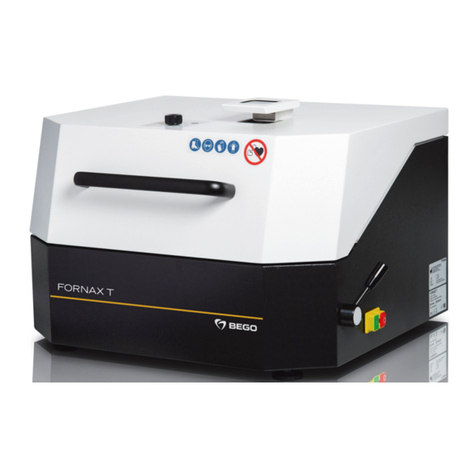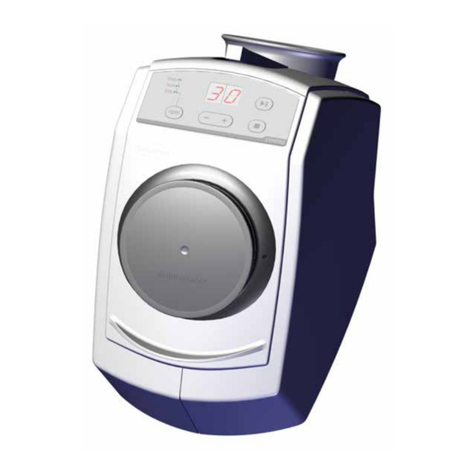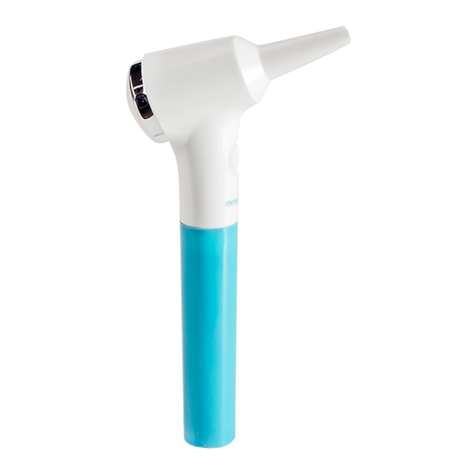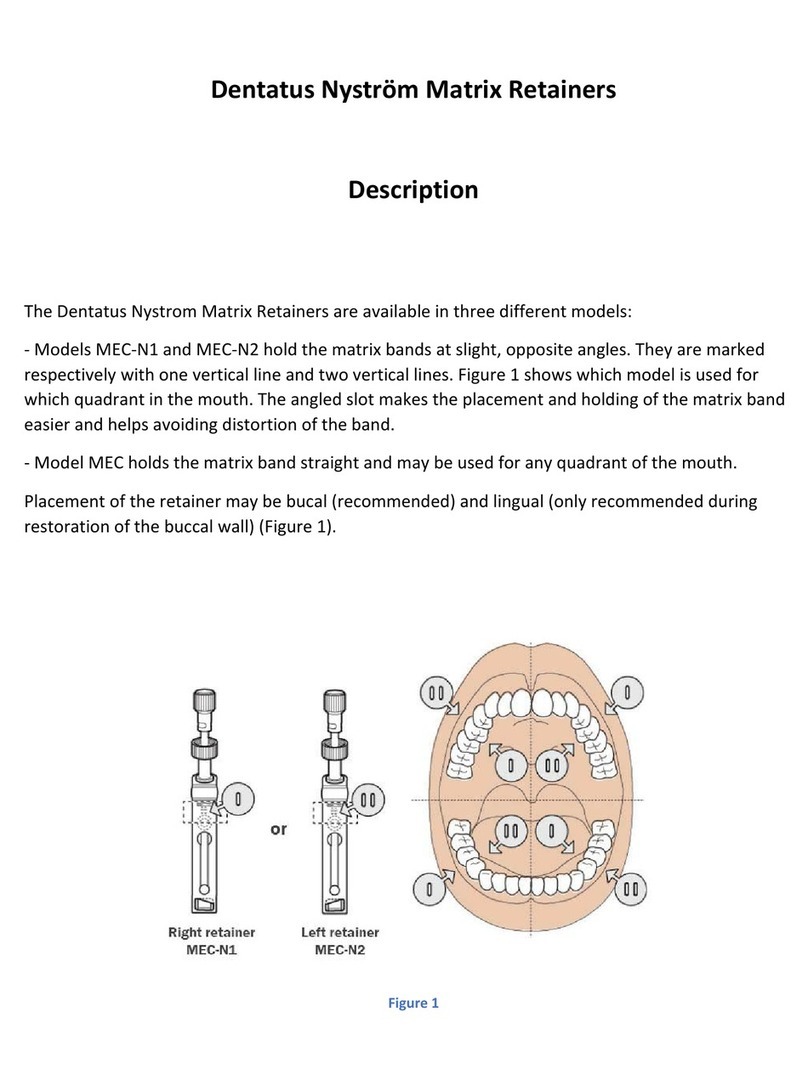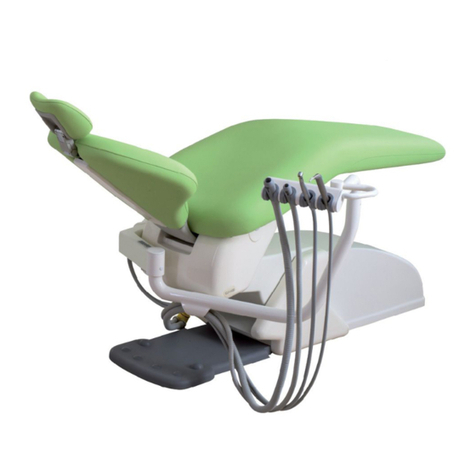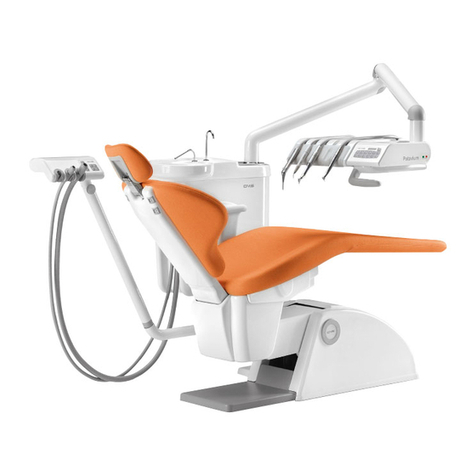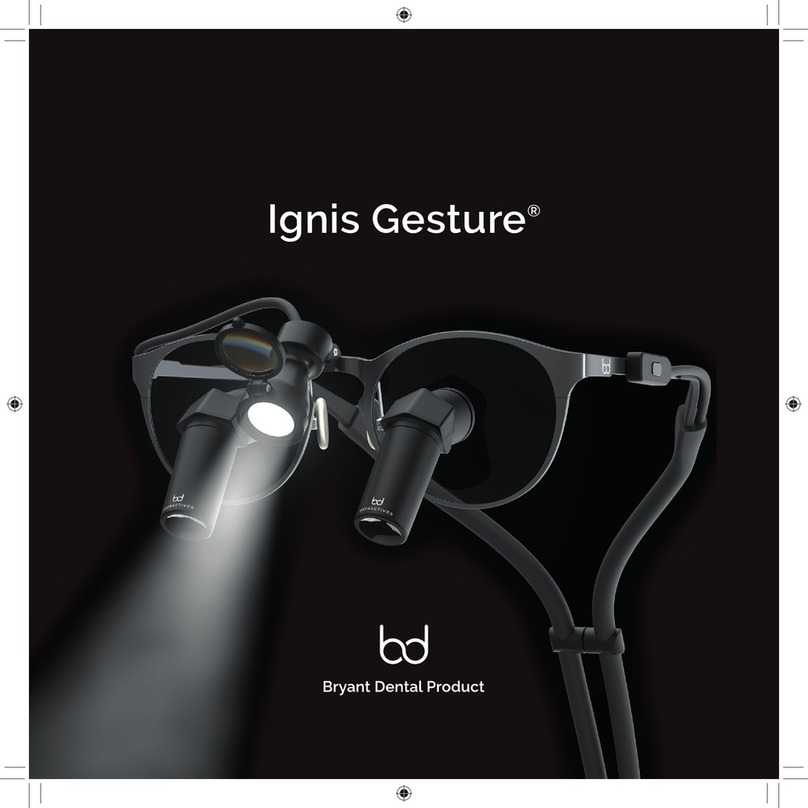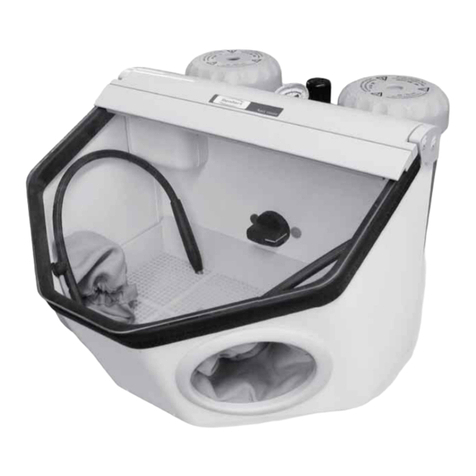
2
1.4 INTENDED USE
The product described in this manual is only intended for sterilization of reusable surgical instruments and
materials.
DEVICE INTENDED FOR PROFESSIONAL USE
The use of the device is strictly reserved to qualified personnel. It must never be used or handled by
untrained and/or unauthorized persons.
The device must not be used for the sterilization of fluids, liquids or pharmaceutical products.
The sterilizer is not a mobile or portable device.
1.4.1. IMPORTANT NOTES
Information contained in this manual is subject to change without notice.
The manufacturer is not responsible for direct, indirect or accidental damage resulting from or relating to the provision
or use of this information.
This document may not be reproduced, adapted or translated, in part or in full, without the prior written permission of
the manufacturer.
1.5 GENERAL WARNINGS
When using this product, always follow the instructions in the manual and never use it for anything other than
its intended purpose.
The user is responsible for any legal requirements relating to the installation and use of the product. The
manufacturer will not be held responsible for any breakage, malfunction, property damage or injury to people
in the event that the product is not installed or used correctly, or proper maintenance is not carried out.
Please observe the following precautions in order to avoid injury or property damage:
›Use ONLY demineralized / distilled water of high quality.
The use of water of inadequate quality can severely damage the device.
See technical characteristics appendix in this regard.
›DO NOT pour water or other fluids on the device.
›DO NOT pour flammable substances on the device.
›DO NOT use the system in the presence of flammable or explosive gases or vapours.
›Before performing any maintenance or cleaning intervention, ALWAYS DISCONNECT power supply.
Whenever it is not possible to disconnect the power
supply from the device, or if the external mains
switch is distant or not visible to the maintenance
technician, place a “work in progress” sign on the
external mains switch after having turned it off.
›Make sure the electrical system is grounded
according to current laws and/or standards.
›DO NOT remove any label or nameplate from the device;
request new ones, if necessary.
›Use ONLY original spare parts.
Failure to comply with the above exempts the
manufacturer from all liability.
